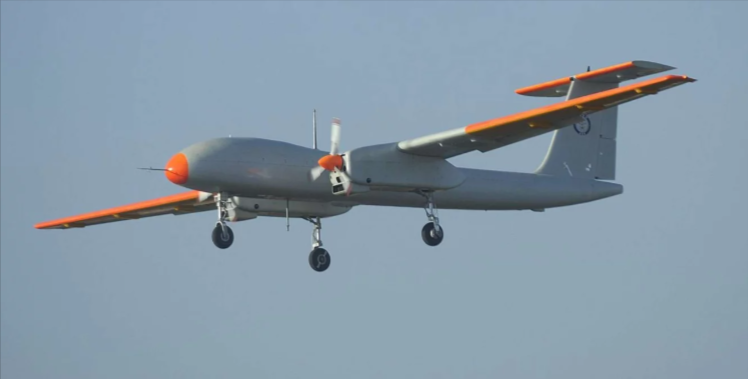
The Indian Air Force and Navy have recently ordered 10 TAPAS-BH-201 (Tactical Airborne Platform for Aerial Surveillance) drones, manufactured by the Defense Research and Development Organization (DRDO). These drones signify India’s commitment to the Atmanirbhar Bharat initiative, which aims to promote technological and industrial self-sufficiency. The TAPAS-BH-201 drones are designated for intelligence, surveillance, and reconnaissance (ISR) missions along India’s western and northern borders.
Although the TAPAS-BH-201 drones do not fully meet the joint services’ qualitative requirements of a 30,000-foot altitude and 24-hour endurance—achieving only 28,000 feet and 18 hours—the armed forces have opted for these drones. This decision underscores their confidence in DRDO’s continuous improvement efforts.
The Tapas drones will play a critical role in ISR missions along the strategically sensitive areas due to ongoing tensions. These regions require constant monitoring, a task well-suited to the high-altitude and long-endurance capabilities of the Tapas drones.
Additionally, the Indian Navy plans to deploy Tapas drones in the strategically important Andaman and Nicobar Islands to enhance maritime surveillance and secure vital sea lanes. The operational capabilities of the Tapas, capable of operating from relatively short runways, make them ideally suited to the geographical constraints of the archipelago.
The incorporation of TAPAS-BH-201 drones is part of a broader initiative to enhance the capabilities of medium-altitude long-endurance (MALE) drones within the Indian armed forces. With the recent induction of Heron Mk2 drones and plans to acquire 91 additional drones, potentially including Heron Mk2 or locally manufactured Drishti 10 Starliner models, India continues to diversify its UAV inventory.
The manufacturing of the Tapas drones will be carried out by a consortium consisting of Bharat Electronics Limited (BEL) and Hindustan Aeronautics Limited (HAL), thereby strengthening India’s domestic defense ecosystem. In a recent trial, a Tapas drone was operated by Indian Navy officials over the Arabian Sea after taking off from the Chitradurga airfield in Karnataka, demonstrating the drone’s operational flexibility and ease of deployment.
The development of the TAPAS-BH-201 drone, known as Rustom-II prior to 2016, is led by the Aeronautical Development Establishment (ADE) in India. This MALE drone was developed to meet the intelligence, surveillance, and reconnaissance needs of the Indian armed forces. Initially faced with challenges related to weight, imported engines, and payload capacity, the project has seen several prototypes and significant improvements over the years.
The TAPAS-BH-201 features advanced technical capabilities, including an operational altitude of 30,000 feet and 24-hour endurance with EO and SAR payloads. It can carry a variety of payloads up to 350 kg. The drone is equipped with advanced communication systems using both LOS and SATCOM bands, allowing it to maintain links over distances greater than 1,000 kilometers through the GAGAN system. Its surveillance capabilities include sophisticated systems such as synthetic aperture radar, which can operate in strip, spotlight, and GMTI modes, offering considerable flexibility for various mission types.
This investment in Tapas drones by the Indian Air Force and Navy is not just a procurement of defense equipment but also a strategic commitment to national innovation and defense industry, aligned with India’s long-term objectives for a robust and self-reliant defense.
The need to enhance Indian aerial drone capabilities stems from ongoing tensions in the strategically critical Ladakh Valley, a region in Indian-administered Kashmir situated in the western Himalayas. This area is crucial not only for its military implications but also for the valuable natural resources it contains.
Historically, tensions in this region date back to poorly defined borders established following the 1962 Sino-Indian War. During this conflict, India and China clashed over several sections of their over 3,000-kilometer-long border, including Aksai Chin—a territory controlled by China but claimed by India. Despite subsequent agreements aimed at demilitarizing the contested areas, these have not always been adhered to, leading to intermittent clashes and diplomatic standoffs.
The need for increased surveillance and operational flexibility became particularly evident following a violent confrontation in 2020 in the Ladakh region, which resulted in casualties on both sides. This incident marked a significant escalation in border confrontations and led to substantial military deployments by both nations. In response, India has focused on enhancing its fleet of aerial drones to improve reconnaissance and operational capabilities, ensuring a sustained and vigilant presence in this contested region. As India and China continue to engage in military and diplomatic negotiations, progress has been slow, and both sides maintain an enhanced military posture in the area.

